It’s less than a five-mile drive to the Cedar Bluffs Recreation Area from home and I see a great many things along our route. This time of year I see beautiful flowers, of course, but I also see a wide variety of wildlife. Deer, opossums, raccoons, squirrels, coyotes, rabbits and more. A crazy number of rabbits. I also see regularly see Mourning Doves, Killdeer, Meadowlarks, Red-winged Blackbirds, Robins, and Quail, among other birds. One day this week I saw a dozen Goldfinches, Iowa’s state bird, take off from a fence to fly over a cornfield.
At two spots along the road, I see a number of Pheasants. Many people don’t realize that the Ring-necked Pheasant isn’t native to the Americas. While there were attempts to introduce the species from Eurasia earlier, they were first successfully established in Oregon in 1881 and in Iowa in 1900.
One of the most amazing things I’ve seen recently was when the sky was just starting to brighten to the east, a Great Blue Heron flew alongside me as I was driving. I was tooling along at about 35mph and the Heron was keeping pace. Much to my delight, when I took a curve in the road, it did too! It was having fun with me, and it was magnificent.
Sometimes I see some “odd” things people do. The county was doing work on this road south of Tracy, and people were driving through and around the road closed sign at night.
So the county parked a maintainer, or what some people call a road grader, behind the sign so people couldn’t drive through. Check, and mate…
In the past couple of weeks, I’ve noticed Osage Orange or Hedge Apples at a spot in the road.
“American settlers used the Osage orange (i.e. "hedge apple") as a hedge to exclude free-range livestock from vegetable gardens and corn fields. Under severe pruning, the hedge apple sprouted abundant adventitious shoots from its base; as these shoots grew, they became interwoven and formed a dense, thorny barrier hedge. The thorny Osage orange tree was widely naturalized throughout the United States until this usage was superseded by the invention of barbed wire in 1874. By providing a barrier that was "horse-high, bull-strong, and pig-tight," Osage orange hedges provided the "crucial stop-gap measure for westward expansion until the introduction of barbed wire a few decades later".
Folklore tells us that Osage Orange placed around the home repels insects, but researchers at Iowa State University tell us that the evidence is lacking. We tried it once, and I’m not sure it worked.
In 2020, I interviewed my friend Paul Weihe, a professor of biology at Central College about Hedge Apples. Here is that interview:
I know farmers don’t like Morning Glories or its cousin Bindweed, but I love Morning Glories and have since I was a kid.
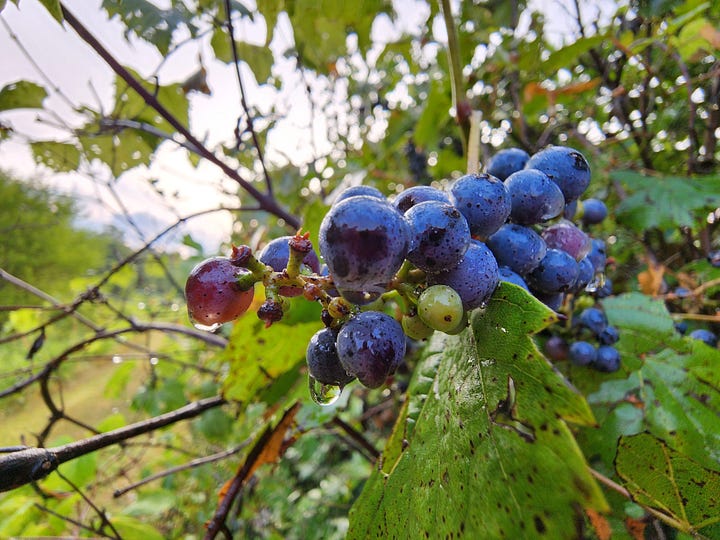
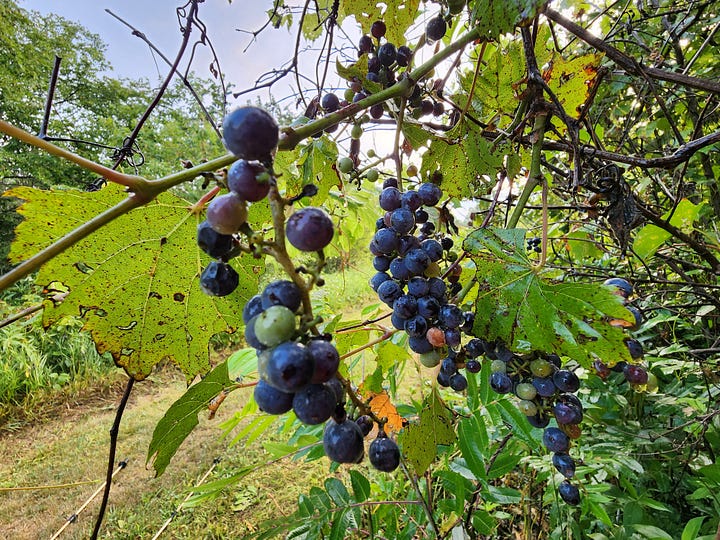
These grapes are lovely and tasty. Different from the domesticated grapes we find in the store, their pulp is smaller and their seeds relatively larger. There are most often only two seeds, and rarely three.
When I was a kid, wild grape “moonshine” wine was made by a man down our gravel road.
Hello friend…
This tall grass is beautiful. We are “re-wilding” our yard, and I’m going to bring some of this seed home when it dries.
I eat a few berries every morning now. I’m not sure if these are blackberries or raspberries. As we all know, the berries all don’t become ripe on the same day.
I’m sure that the physiology of the plant and its immediate environment, influence which berries ripen first. However, it seems to be a wonderful adaptation to me, maybe even a co-evolved one with the animals who eat the berries and disperse the seeds. Ripening at different paces spreads out the timing of seed dispersal, perhaps maximizing the probability of reproductive success, as well as spreading out the timing of a food source so little goes to waste. That’s my hypothesis anyway…
These are amazing fungi on this dead tree.
Goodbye!
I’m a member of the Iowa Writers Collaborative. Please sample the talents of my fellow collaborative members. If you can afford to be a paid subscriber, that would be great. If not, the vast majority of content is free. And here is a link to the Iowa Podcasters’ Collaborative, should you be interested. Check out my Substack Deep Midwest: Politics and Culture if you aren’t already a subscriber. My Iowa Revolution podcast with award-winning broadcaster Spencer Dirks can be found here.
After retiring from radio, I know a little about public relations and have started a small consulting group and associated Substack called Better PR. You might be interested in what I have to share there. Thanks!

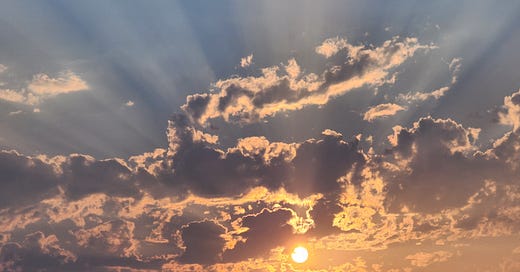




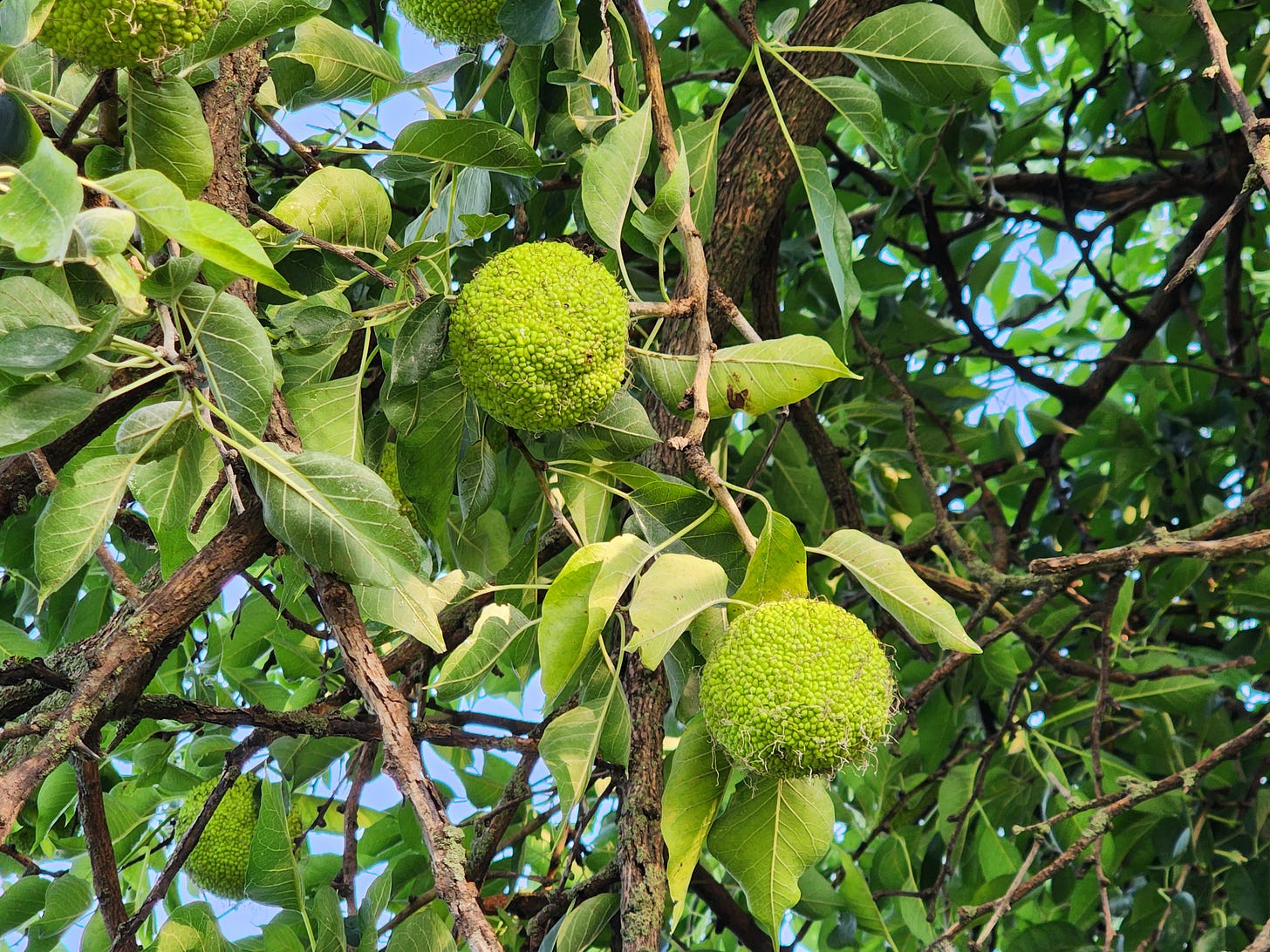
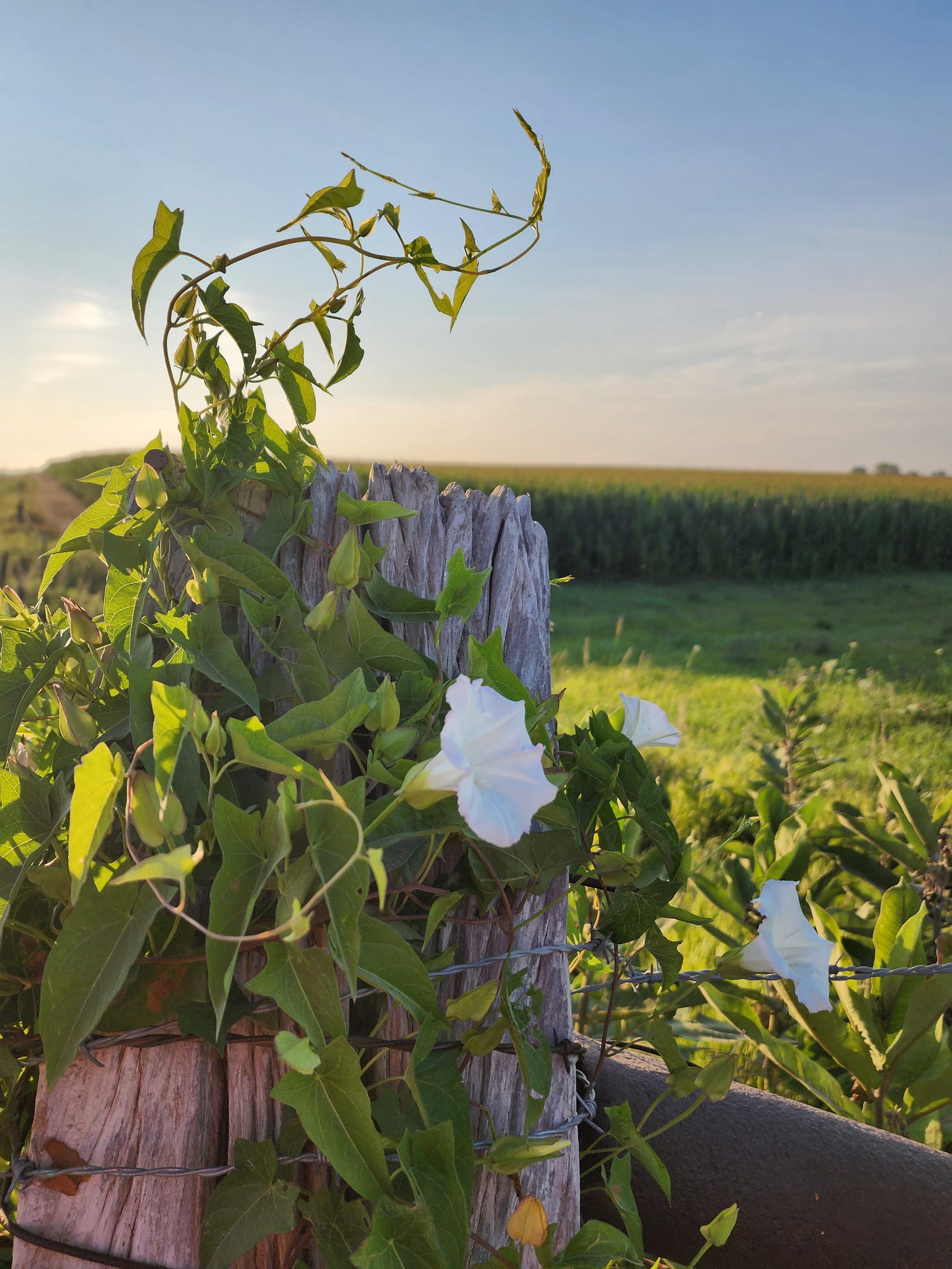
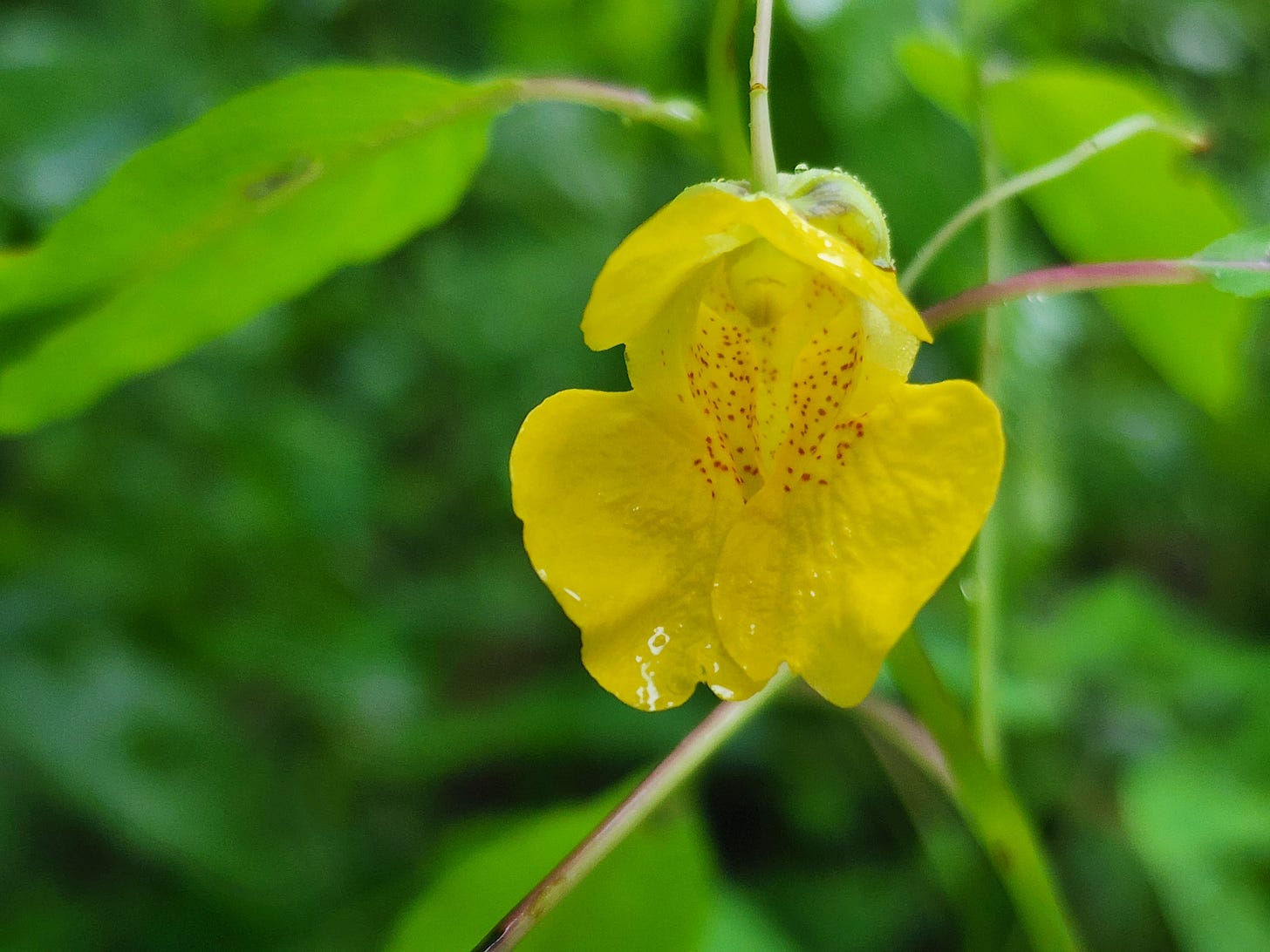
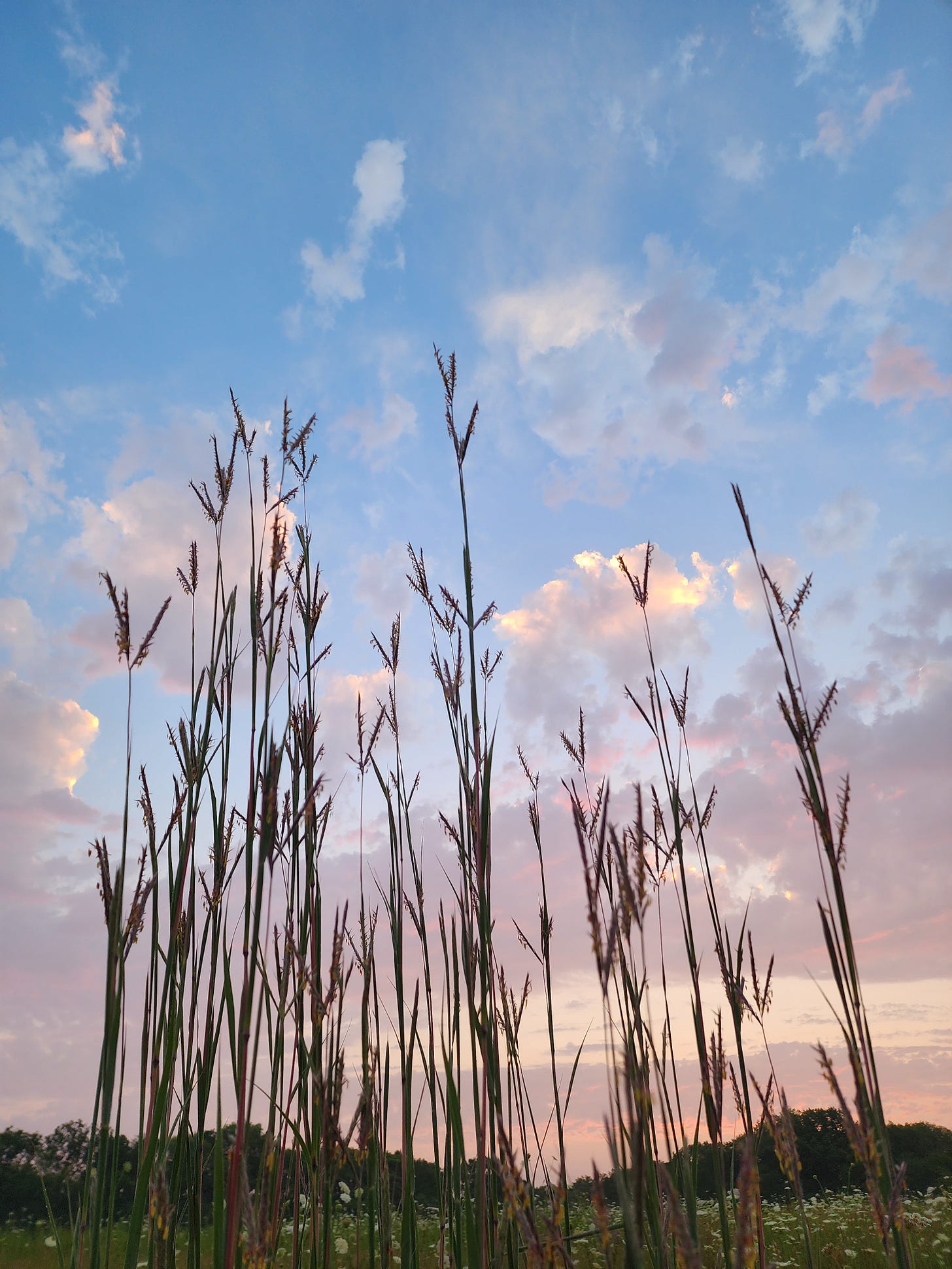
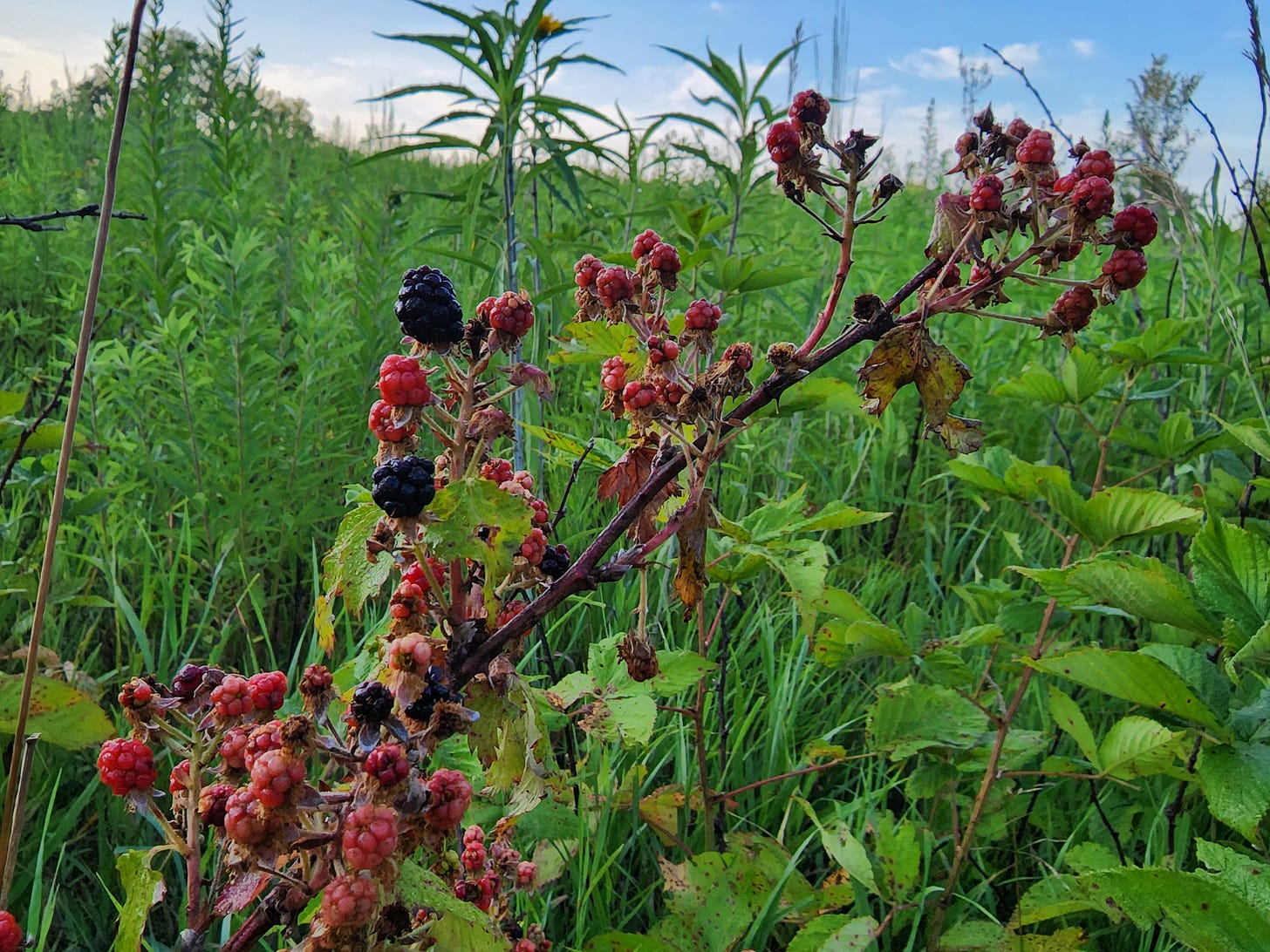
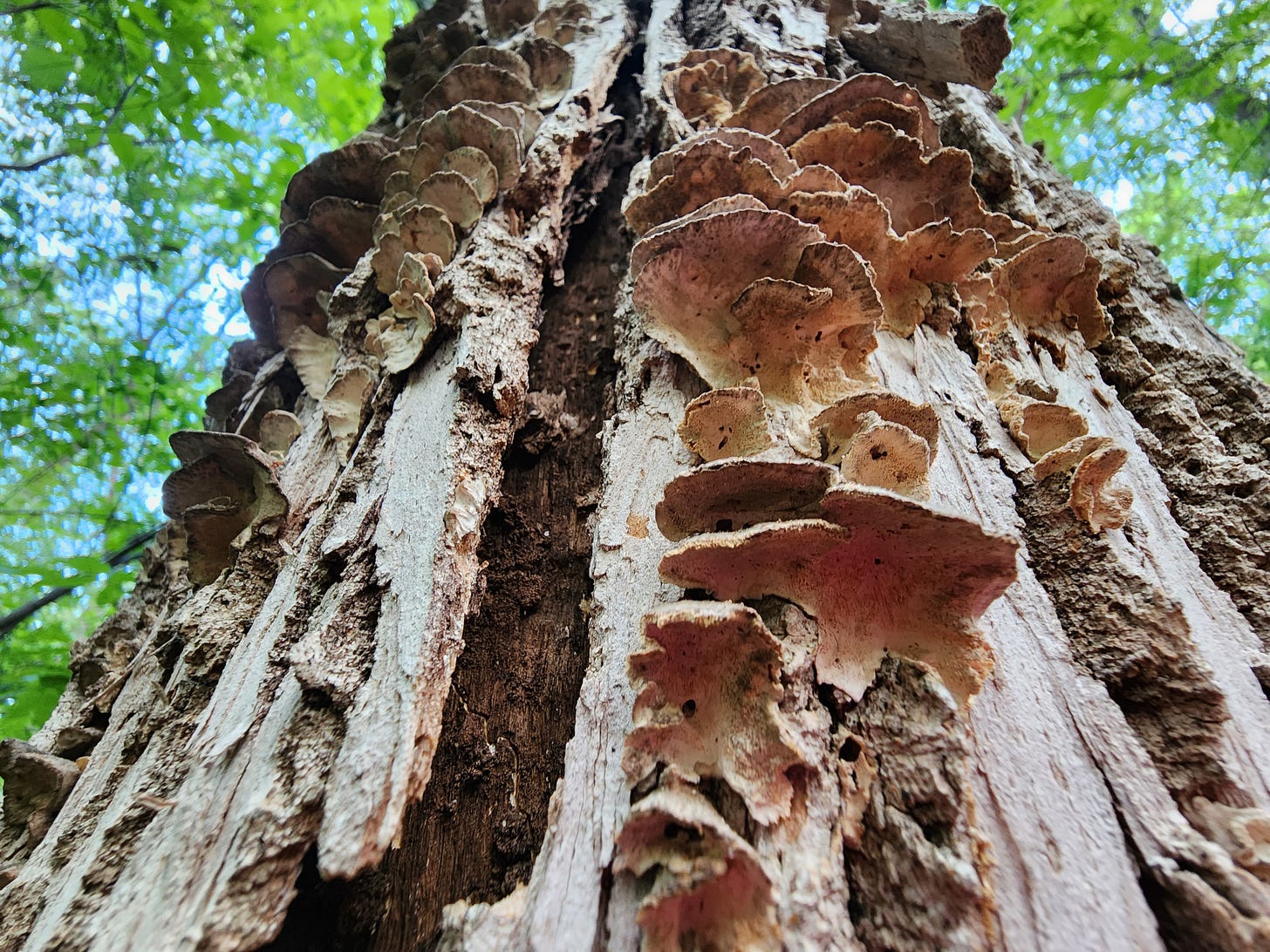
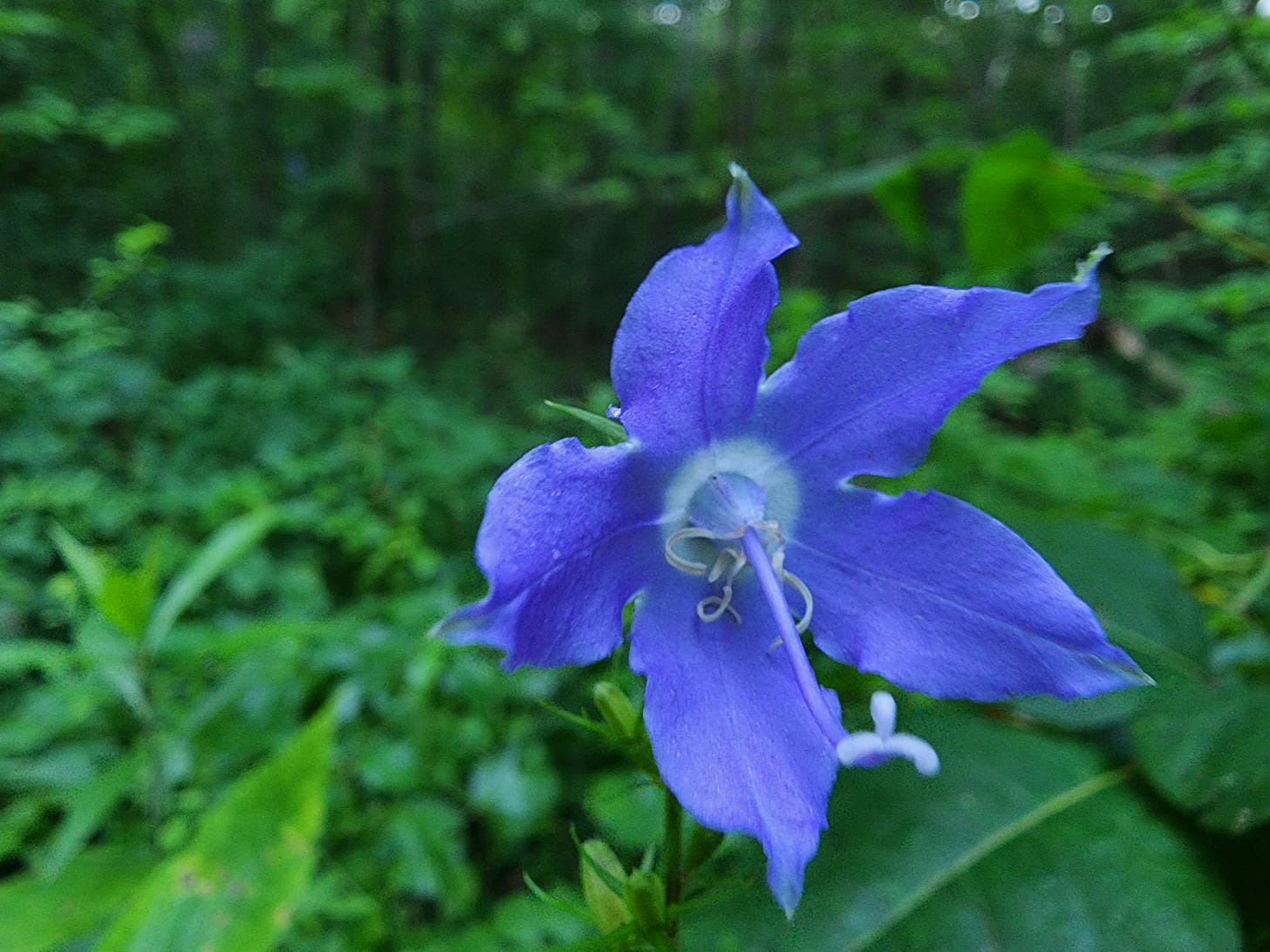
Black raspberries tend to ripen a few weeks earlier than blackberries. If there are still quite a few unripe berries on those shrubs now I would guess those are blackberries. There's also a way to tell by looking to see if there's a cap after you pick the ripe berry.
The yellow flower is a yellow jewelweed, also known as pale touch-me-not. The leaves and stem contain a natural anti-itch compound that supposedly works for mosquito bites or poison ivy.
The blue/purple flower at the end is American bellflower.
Thanks for recalling that interview---such fun! I'm enjoying your walks, keep it coming...